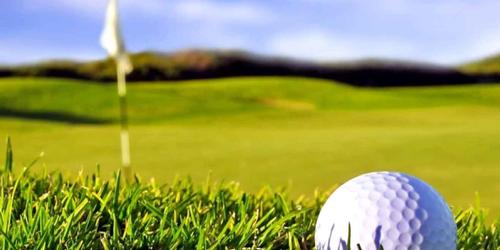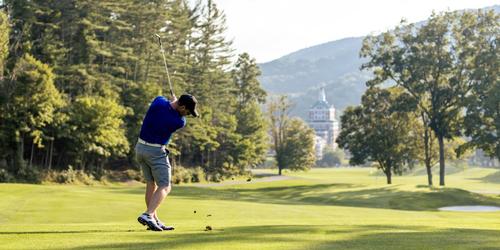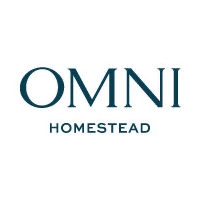
What You Need To Know About The Glenway Golf Park
Glenway Golf Course Construction in Madison, WI
By Brian Weis
Why Glenway and why now?
The proposed project will be entirely funded and resourced by Michael and Jocelyn Keiser, whom at this point are only interested in Glenway and its enormous potential to influence municipal golf in this country for generations to come. Glenway is a uniquely situated piece of land within the city's urban center, featuring a landscape that is prime for ecological restoration and a course that is sized appropriately for players of all ages and abilities. This opportunity is only available this year, as Michael and his team of professionals happen to be together in the area in 2021 and will not be available in 2022. There is no guarantee that this opportunity will arise again. While capital improvement needs are greater on the City of Madison's other three courses, no funding is available in the near future. Ideally this project can inspire others and help open doors for future investment opportunities at our other locations. The overall scope of the project centers around the final report recommendations developed by the Task Force on Municipal Golf in Madison, which was done with broad and in-depth research into the Golf Program, the community as a whole and other municipal operations around the country. The core values of the Task Force and Parks Division are almost fully addressed with this proposed project.
Who will be completing the design and construction processes of the work, andupon completion who will hold operating control?
The design and construction processes will be conducted by Michael Keiser and his talented team with expertise in course architecture, design and construction and ecological restoration.Their work will be informed by input from staff, Board of Park Commissioners, Golf Subcommittee, the project's Turf Science, Ecological Resources and Programming Team as well as feedback gained through the public engagement process. Upon completion of construction, the golf park will be turned over to Madison Parks and the Golf Program to operate, program and maintain the facility moving forward.
What are the key benefits to the community, Madison Parks and the Golf program with a successful project completion?
The project will achieve many of the recommendations outlined by the Task Force on Municipal Golf that set the vision for what the program needs to be in order to survive. These concepts can be replicated on the other courses and to some extent across the entire parks system. The redesign will promote access and inclusion, improve environmental sustainability and reduce resource inputs. As more of the community sees the value in the course and together moves away from "Zero-Sum" thinking, the future of municipal golf will be far more secure. The Golf Program has increasingly struggled with aging infrastructure and worsening course conditions with no available funding in sight. The project allows for investment in infrastructure that would not otherwise be possible, and reduces the total cost for capital reinvestment within the program. This project will be the first large scale capital reinvestment into the Golf Program in 20 years.
Why are the clubhouse, parking lot and woods not included in this project?
The clubhouse and consequential redesign of the parking lot are beyond the scope of what is possible at this time. Madison Parks will consider these projects in the Capital Improvement Planning process for future years and work to determine the true community needs of these amenities. The Glenway Woods are actually classified as Cemetery property, and while wooded edges of the course adjacent to the Woods are under consideration for restoration, preliminary efforts are underway to begin a separate formal planning process for the Woods to start in 2022. The project will focus solely on lands within the Golf Course property only at this time.
Is there a focus on diversity of gender and ages? What has been the outreach for diverse communities?
The Task Force was heavily focused on promoting diversity and inclusion. The City of Madison, as well as the Keiser team, are committed to ensuring Glenway becomes a place for everyone in our community. The design itself, through research, seeks to remove the gendered nature of the course, which by design and tradition was dependent on swing speed. This work will promote enjoyment and overall playability to beginners and experienced players alike. Through the Programs Team, ongoing work of staff and continued partnerships (ie. Change Golf Instruction and First Tee of Wisconsin), we will work to further engage with the community to continually improve the game of golf for all players as well as all park users. The Parks Equity Team will be involved, adding their input on what it will take to improve upon the diversity and welcoming atmosphere not just at Glenway, but all four of the golf courses. We are prepared to make this space as inclusive and educational as possible for as many people as possible.
What costs will Glenway incur in 2021 despite being closed for play?
While many of the course's normal direct variable expenses will not be incurred, or are expected to be minimal, fixed costs such as PILOT, depreciation and some permanent wages will be retained. Revenue loss in 2021 at Glenway is estimated to be $390,000. This will be offset with a savings of approximately $195,000 from a reduction in variable expenses in 2021. Additionally, it is anticipated that 25% of rounds played at Glenway will choose to play at one of our other three courses, yielding a positive revenue impact of approximately $97,000. Overall, this puts the likely negative impact for 2021 at between $100,000 and $150,000. While any
losses are not ideal, a privately funded donation will allow for improvements to be conducted that will be at no costs to the Golf Enterprise or the general tax levy, along with ability to minimize losses in operational costs. In most cases a project of this size would require all expense profile to remain, full loss of revenue, and all capital expenditures for the project to be paid, this is not the case with this project and will only entail a small one year loss and gain a much improved asset.
What will be the financial impact of closing the course for alternative uses during the playing season?
The Programs Team will be working with the community and golfers to determine alternative uses and times for community access beyond golf. While some tee times may be closed off to make way for alternative uses, these times will not impact highly desirable golf times and are intended to minimally affect the budget. The Golf Program as an Enterprise model must produce revenue generation to cover all expenses. All decisions on alternate uses will be done so with substantial vetting of revenue needs.
What are the anticipated operational costs of the redesigned course, considering greens and natural areas will be substantially increased?
While playable areas, such as the greens and fairways, are slated to be increased, the cost to maintain the course will not increase significantly. The plan, for example, increases the total green size at Glenway by around a half acre, which is roughly half the size of the putting green at Yahara Hills. The Turf Sciences team is informing the Design team on species that will be less resource intensive, thus reduce input costs via their extensive research on this topic.
Will the enterprise financial structure of the Golf Program be changed as part of this project?
The project does not change the Golf program's designation as an Enterprise Fund. At this point, the revenue from the Golf course operations is intended to cover the expenses as a result of operating the golf business without general levy support. This is a policy decision that can only be made by elected officials to change this status. The intent of making the courses more inclusive of the entire community for a variety of purposes is to increase the intrinsic value of this property within the community and therefore support for funding.
Who will make the decisions on types of plants, implementation, and long term care of these areas?
The plan is heavily focused on ecological restoration, as native plantings will increase by 1,400%. The Design team has a Restoration Ecologist on staff, and throughout the process the Ecological Resources team, consisting of ecology scholars, field experts and trained staff, has informed the plan by advising on species selection and optimal design. The team is working to develop a land management plan that will promote biodiversity of flora and fauna. The team will also consider how to engage with volunteers to assist in long-term care of these areas and provide public learning experiences.
How will you plan to reduce pesticide use and incorporate other beneficial landscape practices?
The Turf Sciences team is informing the species selection of turf grasses that have been identified through UW research studies to require fewer resource inputs, including pesticides and irrigation. This team will work with staff to develop turf management plans that centers on Integrated Pest Management and overall input reductions.
Who are the impacted users and what attempts will be made to facilitate their uses in 2021 and beyond?
Golf staff are in the process of communicating with historic leagues to accommodate play on other courses. Staff have committed to returning these groups to their normal play when the project is completed. In terms of regular play, players will be able to play on any of the other courses. For reference, though incredibly successful, the Golf program held a 42% capacity level in 2020, which indicates that anyone interested in playing will be able to play during the temporary closure.
How will the course improvements impact future fees and access for local players and those visiting for destination golf?
We anticipate the notoriety of the Keiser name and enticing layout will be attractive to historically regular players, along with a good amount of out-of-town play. A key recommendation of the Task Force on Municipal Golf, as well as a core value of the Project team and staff is to keep golf affordable within the community. There are no intentions to significantly raise rates for local players, nor is there a desire to institute a resident/non-resident rate. The Programs Team will be looking at creative ways to plan for and accommodate destination golf, while controlling rates and preserving access for local players.
Will we see reduction in golf time availability, and how will this affect revenue?
There have been no decisions made to actual hours of operation or schedule of alternative uses. The project's Programs Team, including Golf staff, are carefully analyzing data while determining potential alternative uses for the course. While tee times will likely be reduced to accommodate alternative uses, which will serve to increase inclusivity and access to the courses, we are committed that golf will continue to be available 7 days of the week during the golf season and financial impacts will be minimal. The intent is that these non-traditional uses will be held at lower demand times or as players are coming onto or getting off of the course for the day. Our programming team will make sure to balance all uses in the safest and most effective manner possible. For walkers on the course during play, trails will be designed with safety of all individuals in mind and features, such as lights and signs will be added to ensure awareness.
How will the course appeal to players of all abilities and levels?
The design team has a proven track record in creating courses that are fun for players of all abilities and levels. Part of the design process will be incorporating diverse landing areas, large unique green complexes, and distance diverse teeing grounds. The overall goal will be to make the course playable and interesting for all skill levels from beginning and youth to experienced players alike. For advanced players, the variety in the course will keep it mentally challenging and enjoyable. For junior/beginner golfers, the addition of forward tees will allow them to develop their skills and not get frustrated by having to make longer shots. In general, the course
layout will allow for faster play, yet engaging play, for those who are not able to commit longer periods of time for traditional courses. The course will offer fresh opportunities and a new approach to play that is not common in typical American courses, which were designed with experience and swing speed in mind.
How will walking trails be incorporated into the course?
The plan includes several distinct trails, which will be approximately eight feet wide and will be of natural surfacing. The trail system will be designed to reduce risk to the extent possible. Designers carefully considered areas of play and potential conflict when determining path locations and flow. A clearly visible signing system with educational information and yield signs will help all navigate safely and inform all parties of the risk.
What other uses will be introduced within Glenway Golf Park?
The Programs Team is evaluating all potential options for alternative uses. In the coming months, the team will work with the community to develop a plan that will be approved by the Golf Subcommmittee and Parks Facilities Programs and Fees Subcommittee. While the details of programming have not been finalized, a few examples of activities that are being considered include; Bird and nature educational hikes, movie nights, Learn to Series (Golf, Disc Golf, Identify Invasive, Plant prairies, etc ), mountain biking, disc golf and various cultural activities.
Will winter activities, such as sledding, snowshoeing and cross country skiing, still be allowed?
Yes, year-round access to this recreational amenity is critical. The Programs Team is exploring additional winter activities and considering how the various activities may coexist in a safe and enjoyable manner. There will be no changes to the contour of the land that would impact the current sledding hills and the Ecological Resources team will take these areas into consideration as developing land management plans to ensure vegetation is properly managed at the end of each season
Revised: 05/11/2022 - Article Viewed 4,486 Times
- View Course Profile
About: Brian Weis
![]() Brian Weis is the mastermind behind GolfTrips.com, a vast network of golf travel and directory sites covering everything from the rolling fairways of Wisconsin to the sunbaked desert layouts of Arizona. If there’s a golf destination worth visiting, chances are, Brian has written about it, played it, or at the very least, found a way to justify a "business trip" there.
Brian Weis is the mastermind behind GolfTrips.com, a vast network of golf travel and directory sites covering everything from the rolling fairways of Wisconsin to the sunbaked desert layouts of Arizona. If there’s a golf destination worth visiting, chances are, Brian has written about it, played it, or at the very least, found a way to justify a "business trip" there.
As a card-carrying member of the Golf Writers Association of America (GWAA), International Network of Golf (ING), Golf Travel Writers of America (GTWA), International Golf Travel Writers Association (IGTWA), and The Society of Hickory Golfers (SoHG), Brian has the credentials to prove that talking about golf is his full-time job. In 2016, his peers even handed him The Shaheen Cup, a prestigious award in golf travel writing—essentially the Masters green jacket for guys who don’t hit the range but still know where the best 19th holes are.
Brian’s love for golf goes way back. As a kid, he competed in junior and high school golf, only to realize that his dreams of a college golf scholarship had about the same odds as a 30-handicap making a hole-in-one. Instead, he took the more practical route—working on the West Bend Country Club grounds crew to fund his University of Wisconsin education. Little did he know that mowing greens and fixing divots would one day lead to a career writing about the best courses on the planet.
In 2004, Brian turned his golf passion into a business, launching GolfWisconsin.com. Three years later, he expanded his vision, and GolfTrips.com was born—a one-stop shop for golf travel junkies looking for their next tee time. Today, his empire spans all 50 states, and 20+ international destinations.
On the course, Brian is a weekend warrior who oscillates between a 5 and 9 handicap, depending on how much he's been traveling (or how generous he’s feeling with his scorecard). His signature move" A high, soft fade that his playing partners affectionately (or not-so-affectionately) call "The Weis Slice." But when he catches one clean, his 300+ yard drives remind everyone that while he may write about golf for a living, he can still send a ball into the next zip code with the best of them.
Whether he’s hunting down the best public courses, digging up hidden gems, or simply outdriving his buddies, Brian Weis is living proof that golf is more than a game—it’s a way of life.
Contact Brian Weis:
GolfTrips.com - Publisher and Golf Traveler
262-255-7600













